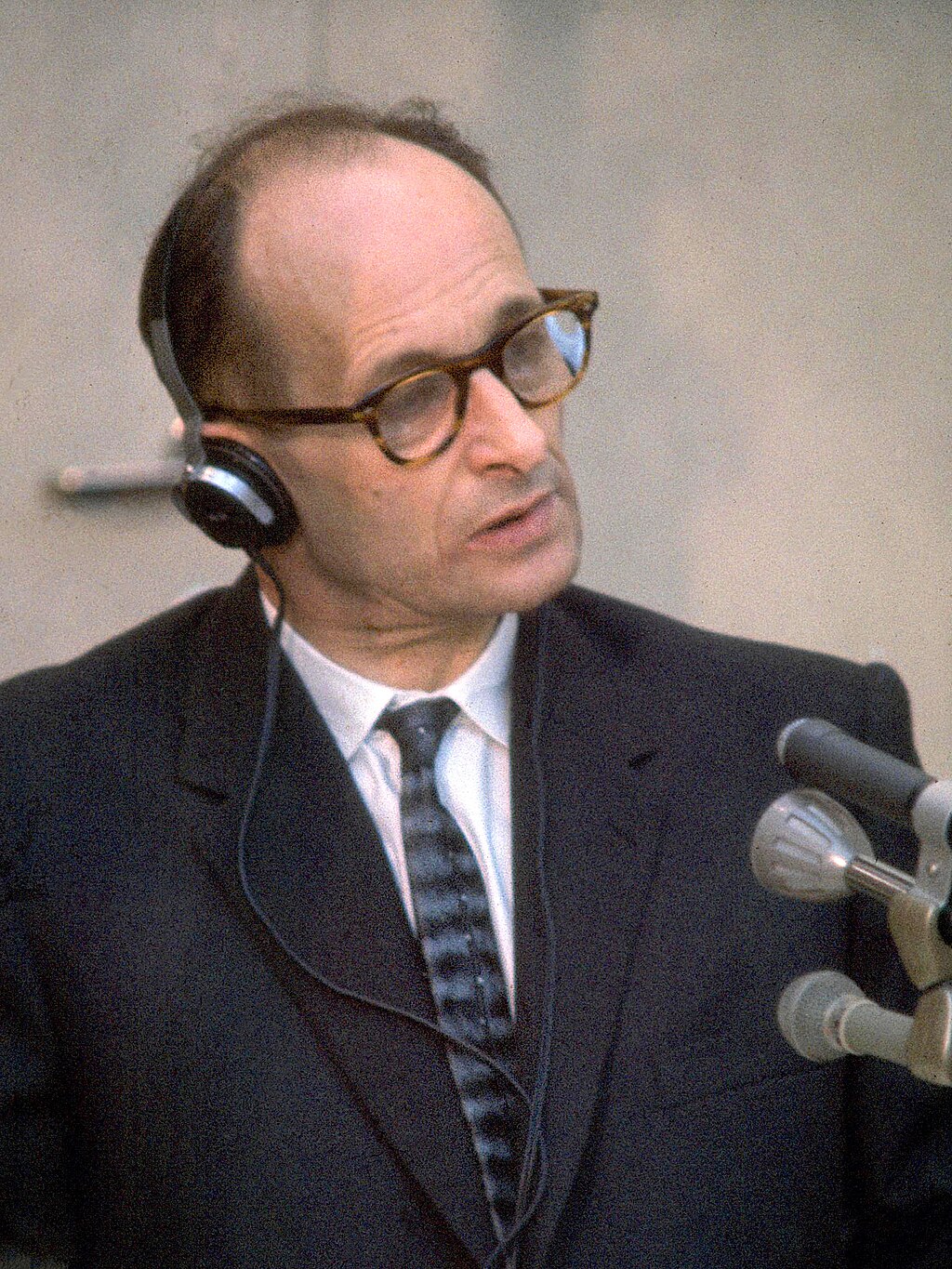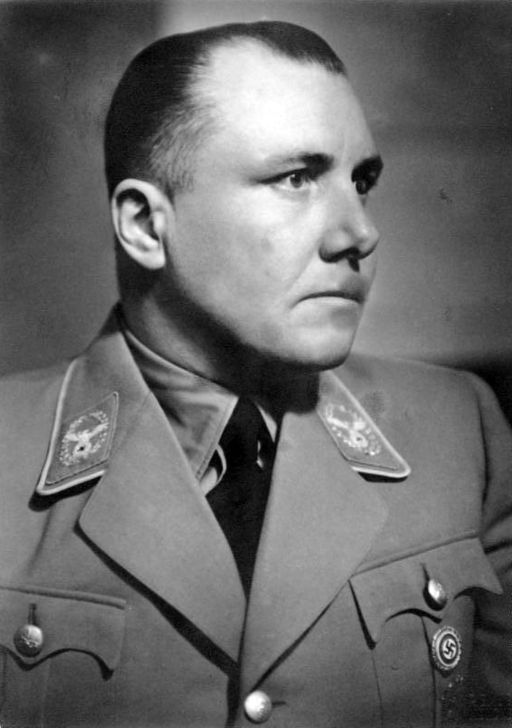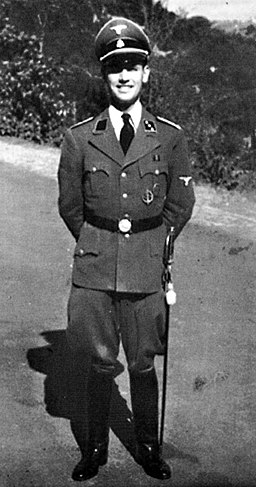High Ranking Nazis in South America: Nazi War Criminal Chiefs Hiding in South America and The Search for War Criminals
Amid the aftermath of World War II, a group of high-ranking Nazi war criminal chiefs hiding in South America, evading accountability for their heinous actions as they lived in obscurity, far from the grasp of justice.
In the aftermath of World War II, several high-ranking Nazis managed to escape justice and find sanctuary in South America, Europe and Middle East far from the reach of international authorities. The escape of these war criminals has been a subject of great interest and concern for decades.
Nazi war criminal chiefs, high-ranking officials responsible for heinous atrocities during World War II, found refuge in South America, escaping justice and eluding capture for decades.
This article delves into some of the well-known cases of Nazis who sought refuge in South America, their activities in the region, and the ongoing efforts to bring them to justice.
Adolf Eichmann – Argentina (Dates: 1950 – 1960)
One of the most notorious Nazis to escape to South America was Adolf Eichmann, a key figure in the logistics of the Holocaust. After the war, Eichmann fled Europe and assumed a new identity in Argentina in 1950. For over a decade, he lived undetected in Buenos Aires, working at various jobs and keeping a low profile. However, in 1960, Israeli intelligence agents successfully captured Eichmann and clandestinely transported him to Israel. He stood trial in Jerusalem, where he was convicted of crimes against humanity and executed in 1962.
Adolf Eichmann was the head of Reichssicherheitshauptamt (RSHA, Reich Security Central Office) Department IV B4 (Jewish affairs), who organized the deportation of Jews to the Auschwitz concentration camp in German-occupied Poland during the Holocaust.

Adolf Eichman at trial in Jerusalem 1961. Israel Government Press Office, Public domain, via Wikimedia Commons
Josef Mengele – Argentina and Paraguay (Dates: 1949 – 1979)
Another infamous Nazi, Josef Mengele, known as the “Angel of Death” for his inhumane medical experiments at Auschwitz, found refuge in South America after the war. He first settled in Argentina under a false name, then later moved to Paraguay and eventually to Brazil. Mengele managed to elude capture for decades, despite international efforts to find him. He lived a relatively comfortable life in Brazil until his death from a stroke in 1979, never facing trial for his heinous crimes.
Who was he?
Josef Mengele, born March 16, 1911 in Gunzburg and died February 7, 1979 in Bertioga, was a German officer in the Schutzstaffel (SS), a war criminal who served as a doctor in the Auschwitz extermination camp during World War II. An active link in the Shoah, he participated in the selection of deportees destined for immediate gassing and carried out various murderous medical experiments on many detainees.

Josef Mengele in the middle. Auschwitz, Poland, Three SS officers (Richard Baer, Josef Mengele, Rudolf Hoess, Auschwitz. Album Höcker.jpg) socialize on the grounds of the SS retreat outside of Auschwitz, at “Solahütte”, 1944. From left to right they are: Richard Baer (Commandant of Auschwitz), Dr. Josef Mengele and Rudolf Hoess (the former Auschwitz Commandant). Bernhard Walther or Ernst Hofmann or Karl-Friedrich Höcker, Public domain, via Wikimedia Commons
Klaus Barbie – Bolivia (Dates: 1951 – 1983)
Claus Barbie, the “Butcher of Lyon,” was a Gestapo officer responsible for torturing and deporting Jews and members of the French Resistance. After the war, he fled to South America and eventually settled in Bolivia under a new identity. For years, Barbie lived openly in the city of La Paz, where he became involved in business and social circles. However, persistent investigative efforts and international pressure eventually led to his arrest in 1983. He was extradited to France, where he stood trial and was convicted of war crimes. Barbie died in prison in 1991.
Who was he?
Nikolaus Barbie said Klaus Barbie, born October 25, 1913 in Bad Godesberg, Germany and died September 25, 1991 in Pierre-Bénite1,2 in France, was a German war criminal, SS police officer under the Nazi regime.
He was head of section IV (Sipo-SD) in the German security police services based in Lyon, during the occupation of France by Nazi Germany. He is known to have deported around 14,000 people to Germany, including resistance fighters and Jews.
Nicknamed “the Butcher of Lyon”, on the run for nearly forty years, he hid in South America under the name of Klaus Altmann and obtained Bolivian nationality in 1957. In 1983, he was finally extradited from Bolivia to France, where he was sentenced to life for crimes against humanity in Lyon in 1987.

Klaus Barbie in uniform. Unknown photographer (for the NSDAP), Public domain, via Wikimedia Commons
Oppenheimer Julius Robert | Father of the atomic bomb and his regrets
Aribert Heim – Argentina (Dates: 1962 – ???)
Aribert Heim, a doctor known as “Dr. Death” for his sadistic experiments on concentration camp inmates, managed to evade capture after the war and allegedly fled to South America. There were reports of him living in Argentina in the 1960s, but his exact whereabouts remain unknown. Despite extensive efforts to find him, Heim’s fate remains a mystery, and he is believed to have died in hiding.
Who was he?
Aribert Heim, born June 28, 1914 in Bad Radkersburg (Austria-Hungary) and died August 10, 1992 in Cairo (Egypt), was an Austrian SS doctor, author of war crimes, who committed atrocities in the concentration camps of Buchenwald and Mauthausen on mainly Jewish prisoners during the Second World War and wanted since his disappearance in 1962 by the German, Austrian and Spanish police, as well as by the Simon-Wiesent Center hal of Jerusalem for Nazi medical experimentation on prisoners as a former SS doctor.
Martin Bormann – Argentina (Dates: 1945 – ???)
Martin Bormann, Hitler’s powerful right-hand man, was considered one of the most significant Nazi officials to have escaped capture. After the fall of the Third Reich, Bormann disappeared, and his fate remained uncertain for many years. There were speculations that he sought refuge in Argentina, but no conclusive evidence was ever found. In 1972, a German court declared him deceased, but his remains were never positively identified. The mystery surrounding Bormann’s escape and possible death continues to be a subject of historical debate.

Martin Bormann in 1939. Bundesarchiv, Bild 146-1968-100-21A / Friedrich Franz Bauer / CC-BY-SA 3.0, CC BY-SA 3.0 DE, via Wikimedia Commons
Eduard Roschmann – Paraguay (Dates: 1947 – 1977)
Eduard Roschmann, also known as the “Butcher of Riga,” was a war criminal responsible for the extermination of thousands of Jews during the war. After fleeing Europe, he settled in South America, where he is believed to have lived in Paraguay. Despite numerous efforts by international authorities to capture him, Roschmann managed to elude justice for decades. He died in Paraguay in 1977, never facing trial for his horrific actions.

Edward Roschmann,Nazi War Criminal,SS Commandant of the Riga concentration camp. W Humburg (1871-1935), Public domain, via Wikimedia Commons
Who was he?
Eduard Roschmann, alias F(r)ederico Wegener and the butcher of Riga (born November 25, 1908 in Graz, died August 8, 1977 in Asuncion, Paraguay), was Austrian. He commanded the Riga ghetto and the Riga-Kaiserwald concentration camp.
In 1938, he joined the Nazi Party and progressed in the SS until he became Hauptsturmführer (captain).
From January 1941, Roschmann worked in the Reich Central Security Office in the Security Service, then in Department IV (Gestapo) with the Commander of the Security Police and Security Service in Latvia.
While commanding the Riga-Kaiserwald concentration camp, he was nicknamed the “butcher of Riga”.
Walter Rauff – Chile (Dates: 1958 – 1984)
Walter Rauff, a high-ranking SS officer, was instrumental in developing mobile gas vans used for mass killings of Jews and others during the war. After escaping Europe, he found refuge in Chile, where he lived under a pseudonym. Despite being sought by Nazi hunters, Rauff remained hidden, living a relatively uneventful life in Chile. He passed away in 1984, and like many others, he never faced the consequences of his war crimes.

SS Standartenführer Hermann Julius Walter Rauff, also Walter Rauff, (born June 19, 1906 in Köthen (Anhalt); † May 14, 1984 in Santiago de Chile); photo during his arrest in Italy in 1945. See page for author, Public domain, via Wikimedia Commons
Alois Brunner – Syria (Dates: 1954 – ???)
Alois Brunner, one of Adolf Eichmann’s henchmen, was responsible for the deportation of tens of thousands of Jews to concentration camps during the Holocaust. After the war, he evaded Allied forces and settled in Damascus, Syria. Despite the relentless pursuit of Nazi hunters and various governments, Brunner managed to remain hidden for decades. He was last spotted in Damascus in the 1990s, but his exact fate remains unknown, and he is believed to have died in Syria.
Gustav Wagner – Brazil (Dates: 1950s – 1979)
Gustav Wagner, known as the “Beast” of Sobibor, was a deputy commandant at the Sobibor extermination camp, where he actively participated in the mass murder of Jews. After the war, he escaped to Brazil, where he lived under an assumed name. In the 1970s, investigators discovered his whereabouts, leading to extradition requests from Germany and Israel. However, Wagner died by drowning in São Paulo in 1979 before facing trial.

Gustav Adolf Heinrich Wagner (1890-1951). http://www.bischofsburg.de/personen/wagner.htm, Public domain, via Wikimedia Commons
Read also: Brief History of the Holocaust Massacre | Nazi Germany | Genocide and crimes against humanity
Erich Priebke – Argentina (Dates: 1949 – 1994)
Erich Priebke, a former SS officer, was involved in the infamous massacre at the Ardeatine Caves in Rome, Italy, where 335 civilians were executed in retaliation for partisan attacks. After the war, Priebke escaped to Argentina, living openly under his real name. For decades, he led a relatively comfortable life, evading justice. However, in 1994, a bold act by journalists led to his arrest and extradition to Italy. Priebke was tried and convicted for his role in the massacre, and he died under house arrest in Rome in 2013.

Erich Priebke at the German Embassy in Rome. See page for author, Public domain, via Wikimedia Commons
Who was he?
Erich Priebke is a German citizen, member of the SS during the Second World War, born on July 29, 1913 in Hennigsdorf (Germany) and died on October 11, 2013 in Rome.
He was SS-Hauptsturmführera and second in command to Herbert Kappler in Rome. As such, he took part in the massacre of the Ardeatine Pits during which 335 Italian civilians were executed by German occupation troops on March 24, 1944, in retaliation for an attack perpetrated the day before by Italian partisans in the center of Rome, on Via Rasella in which 33 German soldiers had been killed.
After the war, he had a Red Cross passport in the name of “Otto Pape”, which allowed him to flee justice until 1995.
Helmut Oberlander – Canada and Argentina (Dates: 1954 – Present)
Helmut Oberlander, a former member of a mobile killing squad during the war, settled in Canada after fleeing Europe. For decades, his involvement in war crimes remained hidden. In 1995, Canadian authorities attempted to revoke his citizenship for lying about his wartime activities, but the case faced legal challenges. Despite the revocation of his citizenship, Oberlander has remained in Canada, living under deportation orders. His case is a testament to the complexities of prosecuting war criminals, even in countries with robust legal systems.

A Ray of Hope: John Demjanjuk’s Trial
The landmark trial of John Demjanjuk, a Ukrainian-born alleged Nazi war criminal, sent ripples through the pursuit of justice. Accused of being a guard at the Sobibor extermination camp, Demjanjuk faced trial in Germany in 2009. The trial set a precedent by focusing on the defendant’s mere presence at an extermination camp rather than direct involvement in specific atrocities. Demjanjuk was convicted in 2011, but he died while his appeal was pending.
Consclusion
The search for Nazi war criminals chiefs hiding in south america continues to be a significant historical and moral challenge. While some infamous individuals, such as Adolf Eichmann and Klaus Barbie, were eventually captured and brought to justice, others, like Josef Mengele and Aribert Heim, managed to escape accountability for their crimes. The pursuit of justice for these war criminals remains an ongoing endeavor, symbolizing the commitment to ensuring that the horrors of the past are not forgotten and that accountability prevails, even decades later.
The stories of famous Nazis hiding in South America continue to reveal new twists and turns, underscoring the importance of sustained international collaboration and the pursuit of truth and justice. As time goes on, the search for fugitives from one of history’s darkest chapters remains a testament to the indomitable spirit of humanity in confronting its past and ensuring accountability for atrocities committed. The legacy of these war criminals serves as a haunting reminder of the horrors of the Holocaust, pushing the world to ensure that the memory of the victims is honored, and that the lessons learned are never forgotten.
The Ongoing Quest for Justice:
The pursuit of justice for Nazi war criminals who fled to South America has been met with numerous obstacles. International efforts to locate and apprehend these evasive figures often encountered challenges related to legal complexities, political alliances, and the passage of time. While some fugitives faced trials and convictions, others lived out their lives in relative obscurity, evading accountability for their atrocities.
Nevertheless, the hunt for justice remains an ongoing endeavor. Governments, organizations, and individuals continue to collaborate, sharing information and resources in the hope of uncovering the truth and providing closure to the victims and their families. The legacy of evil left behind by these Nazis serves as a stark reminder of the horrors of the Holocaust and the importance of never forgetting or letting history repeat itself.
International Cooperation and New Discoveries:
In recent times, collaborative efforts between governments and organizations have unearthed new leads, reigniting hope for justice. Modern forensic techniques, historical research, and declassified documents have facilitated the identification of previously unknown fugitives and their networks.
Among the noteworthy cases is that of Josef Schwammberger, a Nazi war criminal involved in atrocities in Poland during the war. He fled Europe and settled in Argentina, where he lived undisturbed for decades. In 1990, the tireless work of the Simon Wiesenthal Center led to his discovery and extradition to Germany. Schwammberger was eventually convicted of his crimes and sentenced to life in prison.
In another recent breakthrough, a joint operation between Israeli and Argentine authorities led to the arrest of a suspected Nazi war criminal in Buenos Aires. The man, whose identity has not been disclosed at the time of writing, was believed to have participated in war crimes during the Holocaust. His arrest marked a significant step in the ongoing global effort to bring perpetrators to justice.
Sources: The New York Times, Spiegel, NBC News
Photo credit: WikiImages via Pixabay



